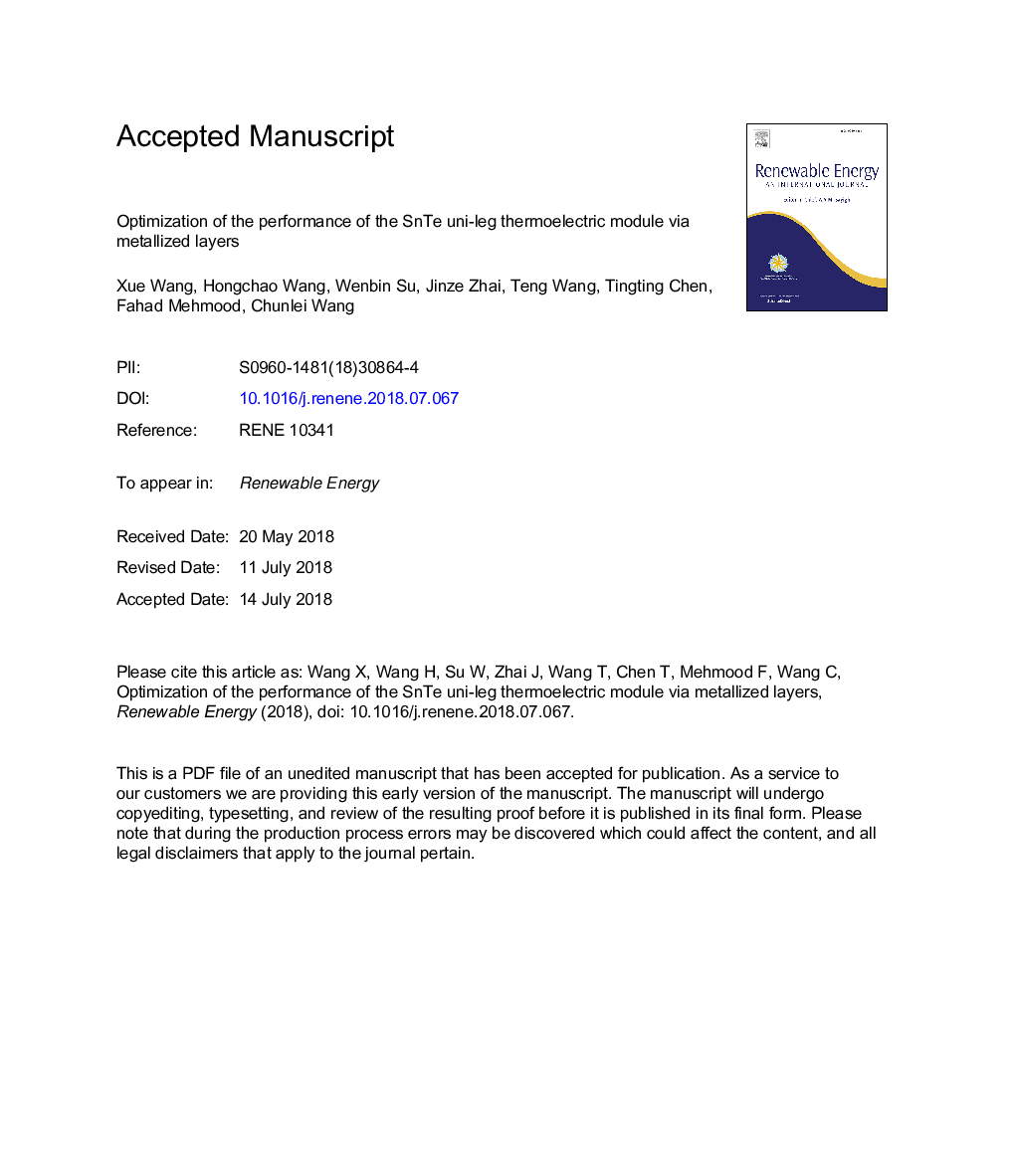| Article ID | Journal | Published Year | Pages | File Type |
|---|---|---|---|---|
| 6763662 | Renewable Energy | 2019 | 37 Pages |
Abstract
We attempt to develop an optimized metallized layer and evaluate the performance for a SnTe uni-leg thermoelectric module by finite-element simulation. The maximum conversion efficiencies of 3.0% and 0.7% have been achieved under ideal and rough contacted thermoelectric modules at ÎTâ¯=â¯600â¯K. The Ag metal is found to be the optimized metallized layer. The module with metallized Ag layer shows the lowest contact resistance and the best performance. The efficiency reaches about 60% of ideal contacted module. Following that, the pressure forced on module and the surface roughness between the electrode, metallized layer and thermoelectric material have been simulated. With the increase of surface roughness slope, the contact and inner resistances of the thermoelectric module are decreased, and the voltage, maximum output power and efficiency are increased. When the average surface roughness slope is over 0.8, the efficiency reaches 90% of the ideal contacted module. The contact and inner resistances obviously decrease with increasing pressure, while the voltage, maximum output power and efficiency are enhanced. The greater than 90% efficiency of an ideal contacted module is achieved when the pressure is beyond 100â¯kPa. These simulated results will be beneficial for the fabrication of SnTe-based thermoelectric modules.
Keywords
Related Topics
Physical Sciences and Engineering
Energy
Renewable Energy, Sustainability and the Environment
Authors
Xue Wang, Hongchao Wang, Wenbin Su, Jinze Zhai, Teng Wang, Tingting Chen, Fahad Mehmood, Chunlei Wang,
